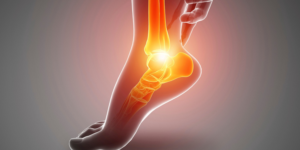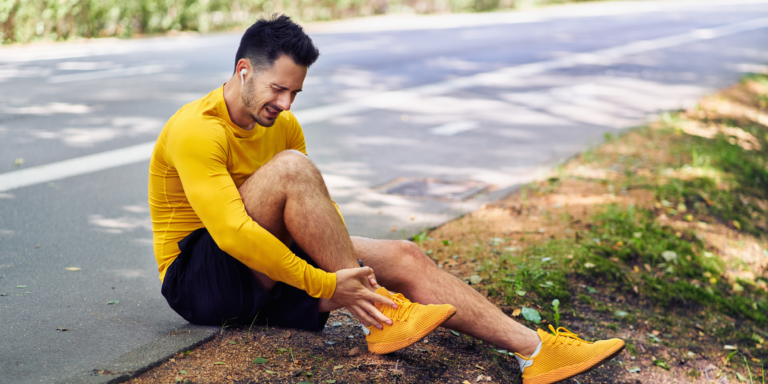
Treating Plantar Fasciitis Without Steroid Injections
Treating Plantar Fasciitis Without Steroid Injections If you’ve ever felt sharp heel pain with your first morning steps, you’re not alone. Plantar fasciitis—inflammation of the

Running is one of the most natural forms of exercise, requiring nothing but a pair of shoes and determination. But while it’s simple to start, running places repetitive stress on the body. Many runners find themselves battling shin splints, knee pain, hip stiffness, or chronic fatigue. The good news? Runners can use osteopathy to avoid injuries, improve efficiency, and sustain their training long term.
Osteopathy is not just for people already in pain—it’s also a powerful preventive tool. Let’s dive into how osteopathy supports runners, reduces injury risk, and enhances performance.
Running is a high-impact sport. Each step puts up to three times your body weight on your joints. Over time, this stress can cause:
Shin splints from repetitive strain
Runner’s knee (patellofemoral pain syndrome) from poor alignment
Plantar fasciitis from tight calves or arches
Hip and lower back pain from poor posture and core weakness
Stress fractures from overtraining or imbalances
Even seasoned runners aren’t immune. That’s why preventive strategies are just as important as training miles.
Osteopathy is a holistic, hands-on healthcare approach that focuses on the body’s structure and function. Osteopaths use manual therapy techniques—gentle manipulations, mobilizations, and soft tissue work—to improve alignment, circulation, and mobility.
For runners, this means:
Detecting imbalances before they become injuries
Correcting postural issues affecting stride efficiency
Enhancing joint and muscle flexibility
Promoting faster recovery after runs
Supporting the nervous system to reduce stress-related tension
During a consultation, osteopaths don’t just treat pain—they analyze movement patterns. This often includes:
Gait analysis – observing how you run, including stride length and foot strike
Posture assessment – checking spine, pelvis, and shoulder alignment
Muscle strength testing – identifying weak stabilizers that cause compensation
Joint mobility checks – ensuring hips, knees, and ankles move freely
By spotting issues early, osteopaths help runners avoid injuries that often stem from repetitive mistakes.
Osteopathy isn’t a “one-size-fits-all” approach. Techniques vary depending on the runner’s needs, but commonly include:
| Osteopathic Technique | How It Helps Runners |
|---|---|
| Soft tissue massage | Reduces muscle tension and improves recovery |
| Joint mobilization | Restores movement in stiff joints |
| Myofascial release | Eases connective tissue tightness |
| Cranial osteopathy | Helps reduce stress and improve nervous system balance |
| Lymphatic drainage techniques | Aids recovery by clearing toxins post-run |
These methods help runners feel lighter, more mobile, and less prone to nagging aches.
Let’s look at how osteopathy addresses specific runner’s injuries:
Shin Splints – Improves calf flexibility and foot mechanics to reduce tibial stress.
Runner’s Knee – Corrects hip-pelvis imbalances and strengthens stabilizers.
Plantar Fasciitis – Releases calf tension and restores foot arch mobility.
Hip and Lower Back Pain – Aligns pelvis and spine for smoother movement.
IT Band Syndrome – Loosens tight fascia and improves stride mechanics.
With preventive treatment, runners can avoid these painful setbacks and keep training consistently.
Osteopathy doesn’t just prevent injuries—it enhances performance. Runners often notice:
Improved running efficiency due to better posture
Reduced fatigue from smoother muscle coordination
Quicker recovery times after long runs
Greater flexibility and joint freedom
Enhanced mental clarity through nervous system balance
When the body moves in harmony, every stride feels more effortless.
The frequency depends on your training load and injury history. General guidelines:
Casual runners (1–2 times per week): every 6–8 weeks for maintenance
Regular runners (3–4 times per week): every 4–6 weeks
Competitive runners or marathon trainees: every 2–4 weeks, especially during peak training
Even one preventive session before increasing mileage or racing can make a difference.
Both osteopathy and physiotherapy are valuable, but they approach care differently:
| Aspect | Osteopathy | Physiotherapy |
|---|---|---|
| Focus | Holistic body balance | Injury-specific rehabilitation |
| Approach | Manual adjustments, circulation, alignment | Exercises, strengthening, recovery plans |
| Injury Prevention | Strong emphasis | Secondary to rehab |
| Ideal For Runners | Preventive care and balance | Recovery after injury or surgery |
Many runners benefit from combining both approaches.
“I used to get shin splints every training season. My osteopath worked on my calves and hips, and I’ve been injury-free for a year.” – David, marathon runner
“Osteopathy helped me improve my posture. I didn’t realize how much my shoulders were affecting my stride until I got treatment.” – Sarah, half-marathoner
“Instead of another forced break from running, I started seeing an osteopath monthly. My recovery times are shorter, and I feel stronger.” – James, trail runner
If you’re new to osteopathy, here’s what typically happens:
History review – your training, injuries, lifestyle
Posture and gait assessment
Manual therapy treatment tailored to your body
Advice on stretching and strengthening exercises
Plan for follow-up sessions if needed
It’s a gentle, non-invasive process designed to make you feel supported and in control.
The key takeaway is that osteopathy is both preventive and restorative. By identifying small imbalances before they become big problems, osteopaths help runners stay on the road, track, or trail without unnecessary downtime.
Whether you’re training for your first 5K or your tenth marathon, incorporating osteopathy can be the edge that keeps you healthy, consistent, and injury-free.
Can osteopathy replace physiotherapy for running injuries?
Not exactly. Osteopathy is excellent for prevention and whole-body balance, while physiotherapy specializes in injury rehab. Many runners use both.
Does osteopathy hurt?
Most techniques are gentle and non-invasive. Some soreness is possible, but treatment shouldn’t be painful.
Is osteopathy only for injured runners?
No—many runners use it preventively to avoid injuries and improve performance.
How long does it take to see results?
Some runners feel lighter and looser after one session, while others notice gradual improvements over several visits.
Can osteopathy help with marathon training?
Yes, especially during high mileage phases. Osteopathy can reduce recovery time and protect against overuse injuries.
Is osteopathy safe for beginners?
Absolutely. Beginners benefit greatly from learning proper movement mechanics early on.
Running is rewarding, but it places heavy demands on the body. Instead of waiting for pain to strike, smart athletes use osteopathy as a preventive tool. How runners can use osteopathy to avoid injuries comes down to one principle: take care of the body before it breaks down. With expert hands guiding alignment, balance, and flexibility, you’ll enjoy more miles with fewer setbacks.
Investing in osteopathy may be the best training partner you never knew you needed.

Treating Plantar Fasciitis Without Steroid Injections If you’ve ever felt sharp heel pain with your first morning steps, you’re not alone. Plantar fasciitis—inflammation of the

Best Home Exercises to Support Your Physio Progress When you walk out of a physiotherapy session, the real work isn’t over—it’s just beginning. Continuing your

The Science Behind Osteopathy: A Deep Dive for Patients Osteopathy often sparks curiosity among those searching for safe and effective pain relief methods. While its